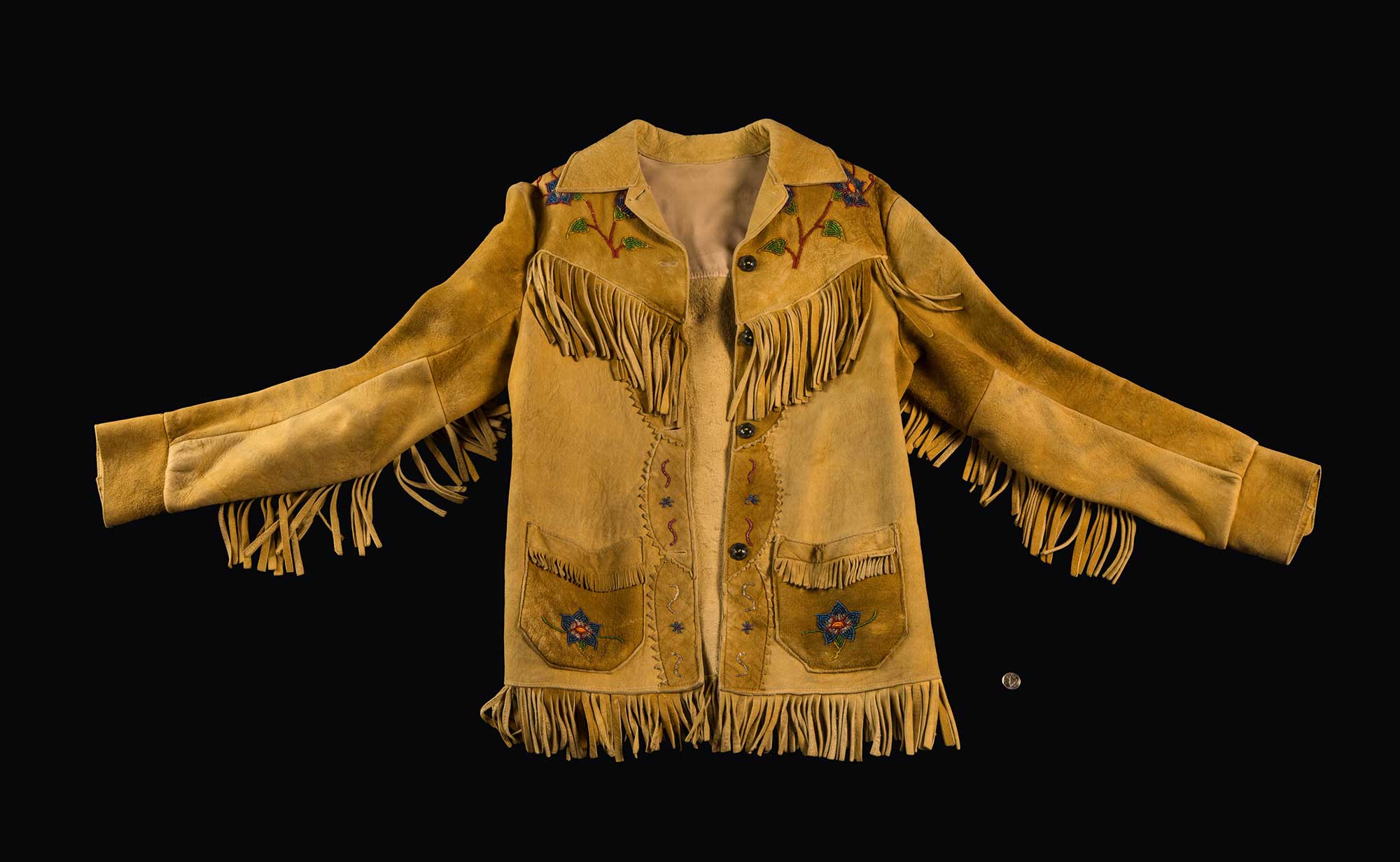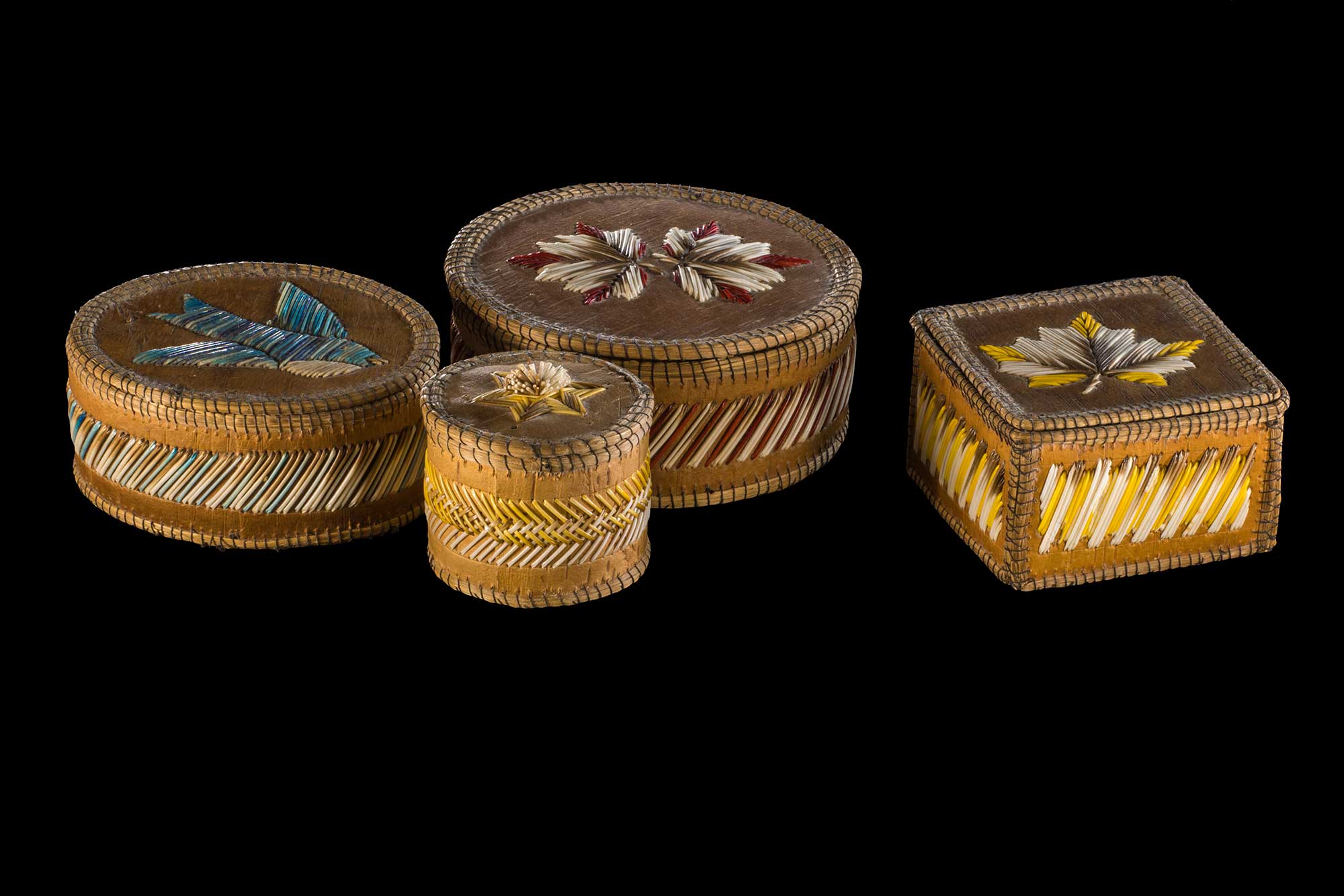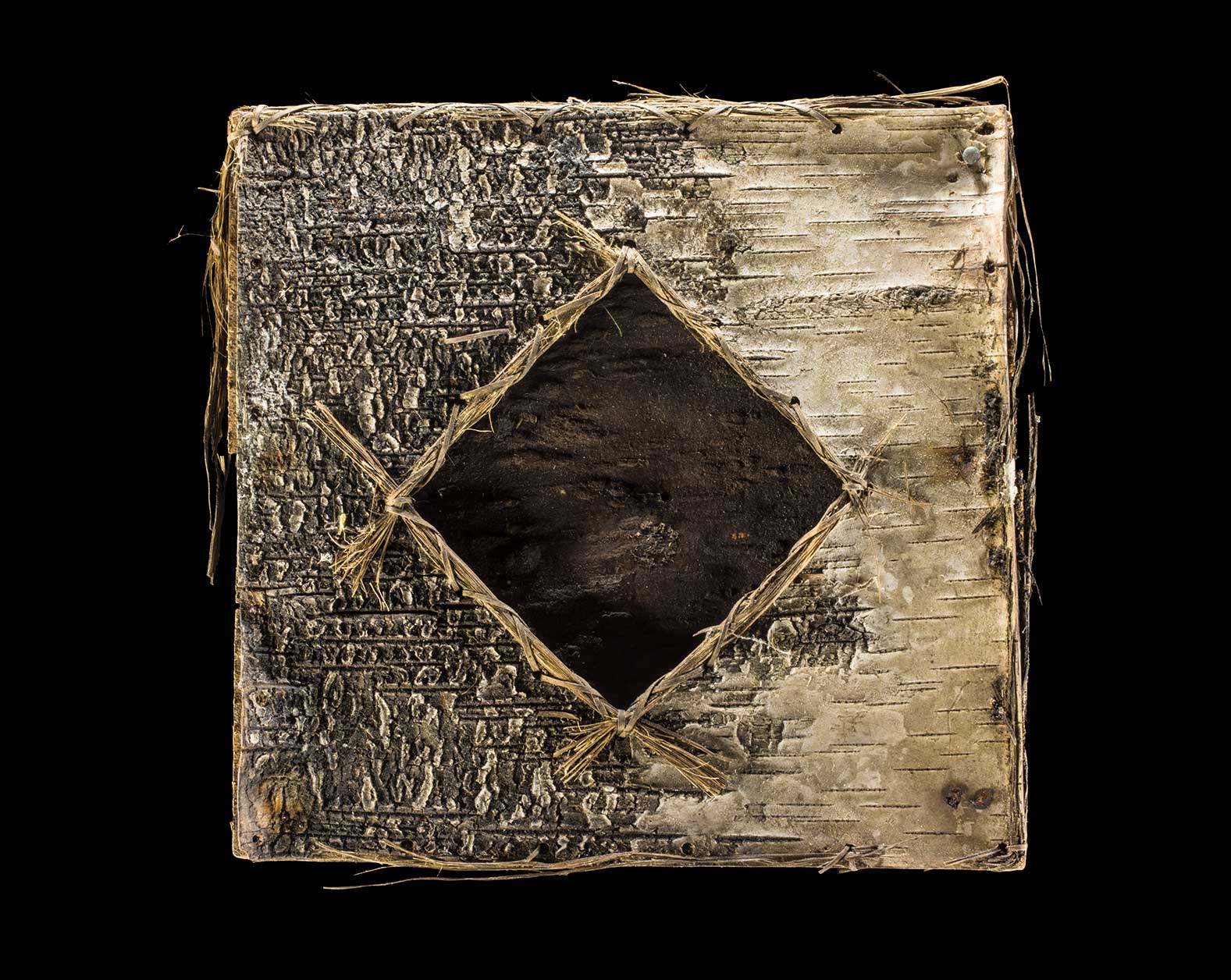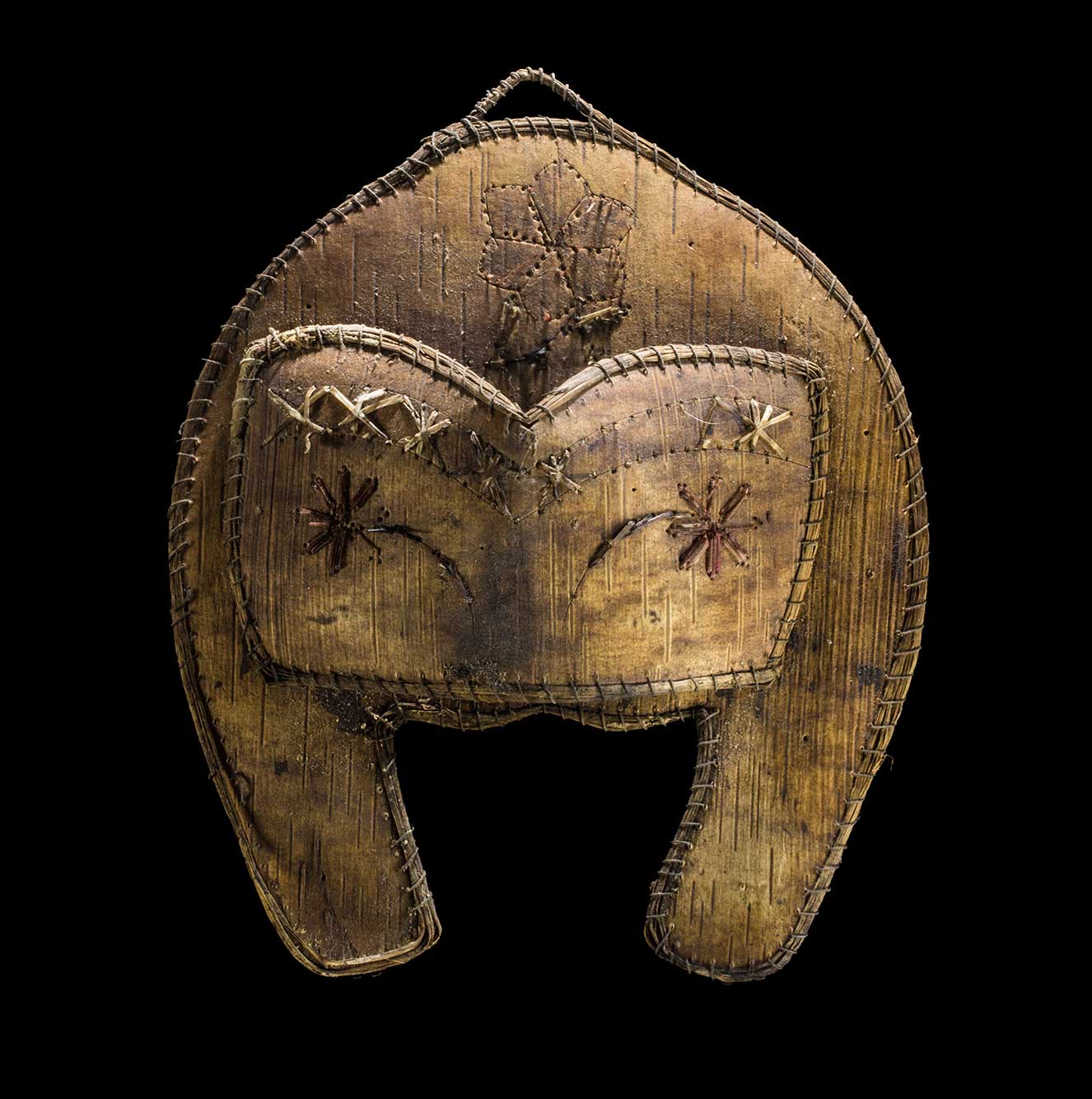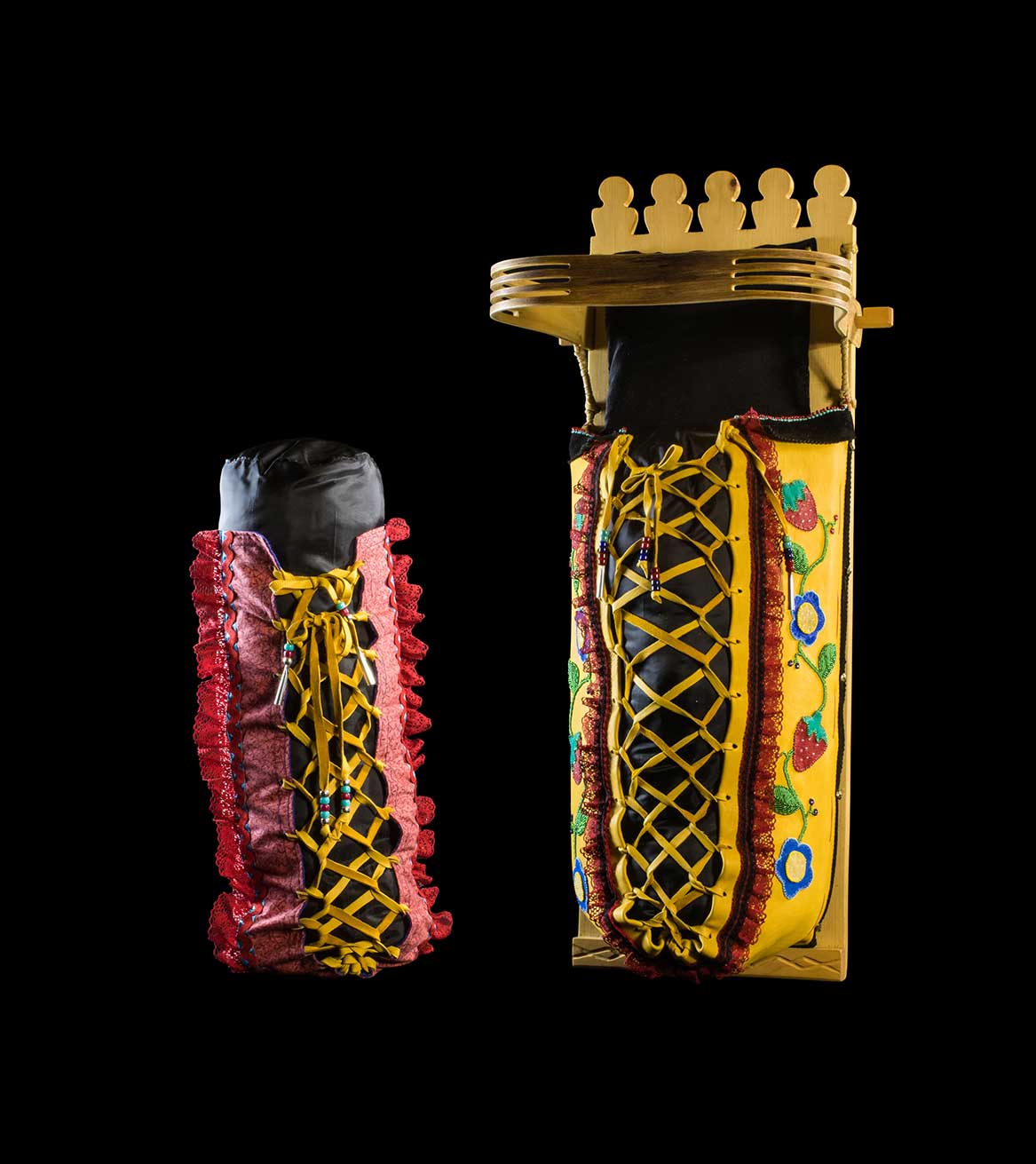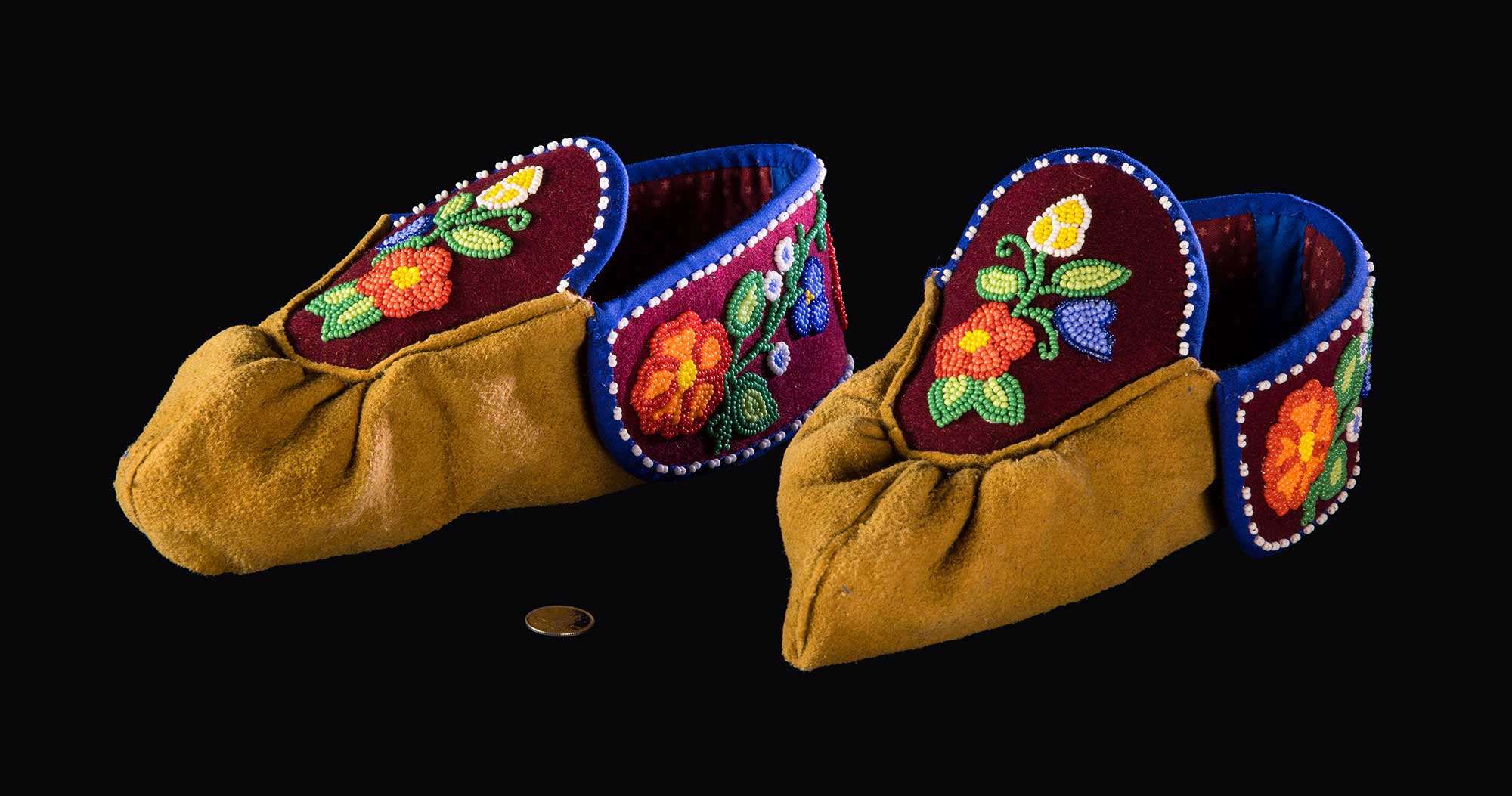Wiigwaas Jiimaanke (birchbark canoe build) at the Georgian Bay Biosphere Canoe Build, 2019. PHOTO BY DELINA RICE. COURTESY GEORGIAN BAY BIOSPHERE RESERVE.
FOURTH LANDING
Anishinaabek Communities
What You’ll Learn in this Section
Accelerating in the 1830s, Canada increasingly worked to remove Indigenous peoples from their lands, forcing them onto small land holdings called “reserves,” with the goals including converting Indigenous peoples to Christianity and European style farming. Desirous of freeing up more land for European settlement, the government had the idea of “reserving” land for Indigenous peoples. The British encouraged and then forced relocation to these reserves where colonial laws were enforced and foreign customs and ways of life were imposed. “The Coldwater Experiment,” a systematic attempt to to assimilate Anishinaabek people, failed due to settler encroachment, government mismanagement, religious competition, and the Anishinaabek desire to maintain their lifestyle.
From 1828 through 1996, Indigenous children were removed from their families and placed in residential schools across Canada. The intent was to destroy Indigenous cultures and force families to rely on Government systems and the white way of life. Now viewed largely as a mistake, the abuses that took place have left intergenerational trauma, identity confusion, and perpetual economic challenges.
In the 1830s, Canada was at a crossroads, concerned with the “Indian Question” – what to do with their Indigenous allies from the War of 1812? The government’s solution was to remove Indigenous people from their lands, forcing them onto reserves with the goals of conversion to Christianity, and English-style farming. In this region the “Coldwater Reserve Experiment” failed due to settler encroachment, government mismanagement, religious competition, and the Anishinaabek’s desire to maintain their lifestyle of seasonal migration between fishing, hunting, medicine gathering, and maple sugar camps across the region. Today, Anishinaabek peoples continue to thrive, embracing traditional ways and leading their communities into the future.
Arrival of the Potawatomi in Misko-Aki
On May 28, 1830, US President Andrew Jackson signed into law the Indian Removal Act. The law had the authority to forcibly remove all Indigenous nations east of the Mississippi River and force them to migrate west, often referred to as the Trail of Tears.
The Potawatomi Nation was affected by this legislation, and many decided to migrate north to Canadian territory. In Misko-Aki, Potawatomi families settled at Moose Deer Point First Nation and Wasauksing First Nation. Some families joined the Anishinaabek settlement at Beausoleil Island. These families can be traced by name through the Wooster Roll of 1907. Other family names can be traced to other Indigenous communities across modern-day Ontario.

The Coldwater Experiment: The Inception of the Reserve System
With the War of 1812 over, the relationship between Indigenous peoples and the British Crown changed. Indigenous peoples, including the Anishinaabek, were no longer seen by the Crown and settlers as allies. Desirous of freeing up more land for European settlement, the British had the idea of “reserving” land for Indigenous peoples. The British encouraged and then forced Indigenous peoples to relocate to these reserves of land, where colonial laws were enforced and foreign customs and ways of life were imposed. The Coldwater Experiment began in 1830, stretched from Orillia to Coldwater, and was one of the first examples of the reserve system within Canada.
“Our ancestors were expected to abandon their culture and traditional ways of living once they were relocated to the Coldwater Reserve. Our ancestors refused. Using their wisdom, they remained true to their Anishinaabek culture, language, and traditions. They still hunted, harvested, and fished in their traditional territories. They refused to fully assimilate. This angered the government, who felt our ancestors were unappreciative of their efforts to assimilate them into Canada. In 1836, our ancestors were coerced into surrendering the Coldwater Reserve back to the Crown, and our community split into three distinct communities known today as the Chippewas of Rama, the Chippewas of Georgina Island, and Beausoleil First Nation.” – BEN COUSINEAU, Rama First Nation
Dispersal from the Coldwater-Narrows Reserve
Yellowhead, Assance, and Snake were the three headmen at the Coldwater-Narrows Reserve. In 1836, they were invited by the government to the town of York (Toronto) to sign a document for the title of the reserve lands but were tricked into signing a surrender. Having been deceived, they were forced to disperse to separate communities. Chief Joseph Snake led his band to Snake Island and today call Georgina Island home. Chief John Assance and his band were relocated to Beausoleil Island and now live on Christian Island. Chief Yellowhead and his band were forced to purchase the land where they now make their home at Rama.
INDIGENOUS PERSPECTIVE
“We were allies of the Crown and that’s how we came into Canada in the first place. We got these three little pieces of land, but we haven’t been treated very well. We don’t even have a treaty to help us out. That’s not fair.” – ART SANDY, Moose Deer Point First Nation
“They were made to wear certain clothing and this clothing would recognize them as being part of this reserve and if they were seen outside of that territory, then the authorities would be alerted and they’d either end up in jail or they would be herded back to that reserve. They weren’t allowed to leave the area without a pass. They had to have a pass from Lieutenant Anderson who was the Indian agent at the time. They weren’t allowed in the stores unless they had a non-Indigenous person with them. There were so many things that they were not allowed to do.” – MYIINGAN B. JEFF MONAGUE, Beausoleil First Nation
CANADIAN GOVERNMENT POSITIONS
“When the school is on the reserve the child lives with its parents, who are savages; he is surrounded by savages, and though he may learn to read and write, his habits and training and mode of thought are Indian. He is simply a savage who can read and write. . . . [T]he Indian children should be withdrawn as much as possible from the parental influence, and the only way to do that would be to put them in central training industrial schools where they will acquire the habits and modes of thought of white men.” – SIR JOHN A. MACDONALD, Prime Minister of Canada, in 1883.
“I want to get rid of the Indian problem. I do not think as a matter of fact, that the country ought to continuously protect a class of people who are able to stand alone. . . . Our objective is to continue until there is not a single Indian in Canada that has not been absorbed into the body politic and there is no Indian question, and no Indian Department, that is the whole object of this Bill.” – DUNCAN CAMPBELL SCOTT, Deputy Superintendent of Indian Affairs, when mandating residential school attendance in 1920.
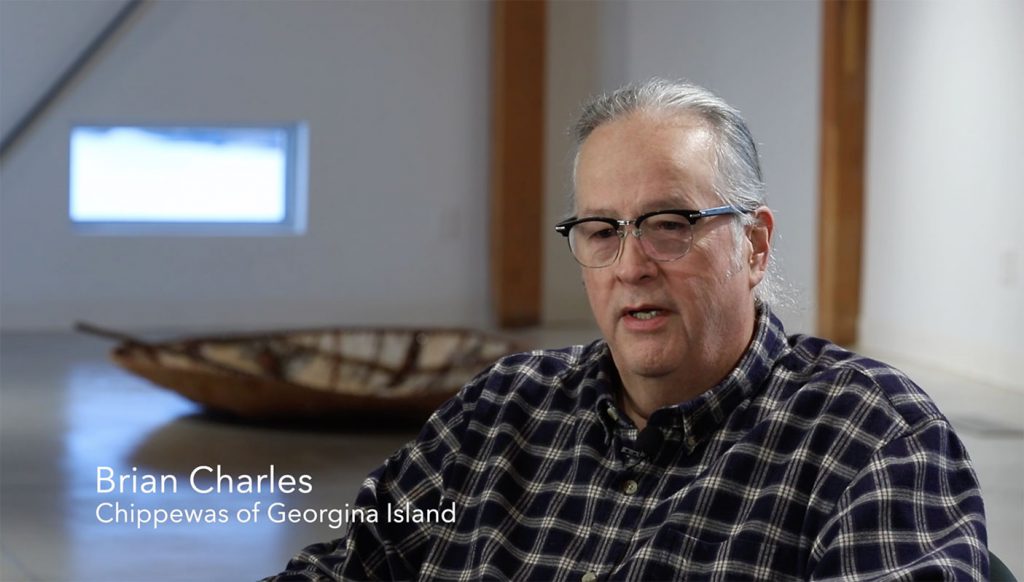
LISTEN TO OUR STORIES
Brian Charles, Chippewas of Georgina Island First Nation, explains the significance and role of wampum belts in Indigenous society. (Length: 4:00)
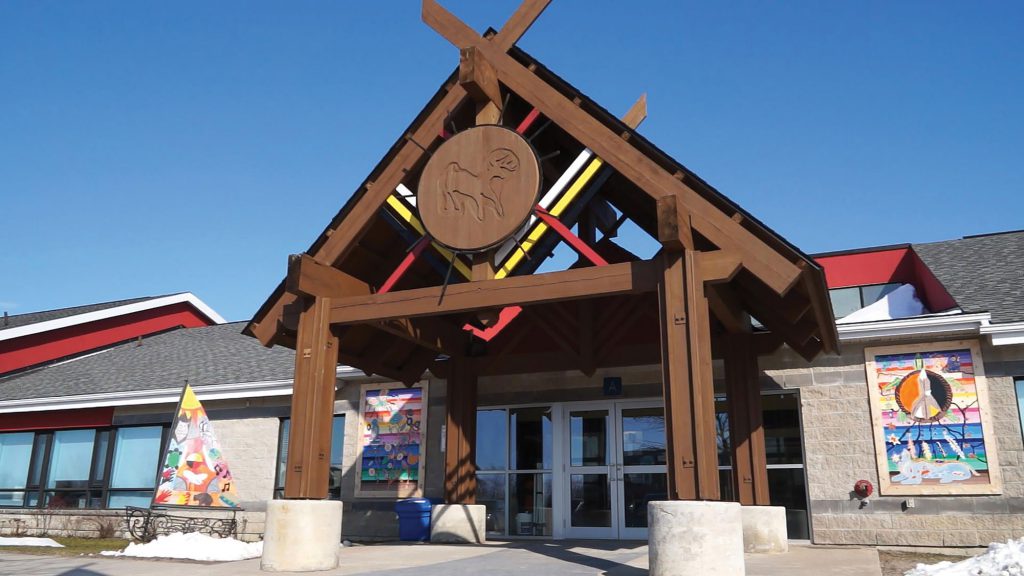

Rama First Nation community buildings today: Mnjikaning Kendaaswin Elementary School, Binoojiinsag Kinoomaagewgamig Early Childhood Education Centre, and Fire Station. PHOTOS COURTESY RAMA FIRST NATION.
Rama First Nation: A Proud, Progressive First Nation
The Chippewas of Rama First Nation have been known as a caring, sharing people throughout history. This Chippewa territory has been called “the gathering place” where travelers rested before continuing on their journey, where great meetings were held, and important agreements signed. From the earliest of times, the Chippewas have been entrepreneurs, artisans, craftsmen, hunters, and fishermen. They later operated as guides throughout the area for tourists, and marketed crafts and produce.
In 1996, the Nation opened Casino Rama. Soon after, it built its own JK-8 school, police, fire and emergency medical services stations, health centre, seniors centre, arena, and much more. Now, young people of the community are attaining high levels of education, their people have work and are prosperous, and are reclaiming their culture and language.
Casino Rama and the accompanying hotel are not run by Rama First Nation, but rather an independent casino operator. Previously, it was operated by Ontario Lottery and Gaming Corporation (OLG). Rama First Nation only receives income from leasing the land to the operator. Regardless, the community’s decision to permit the casino in Rama paved the way for a successful and progressive future.
“Our community and our people have overcome tremendous adversity. We’ve survived an attempted genocide, the erosion of treaty rights, the theft of land, and countless systemically racist laws designed to erase our people. Yet we are still here. In the past forty years, our little community has grown into a bustling place of opportunity.” – MARK DOUGLAS, Chippewas of Rama First Nation
Beausoleil First Nation
G’chi Mnissing (Christian Island) is part of the Beausoleil First Nation territory and includes Beckwith and Hope Islands. This beautiful island is home to 860 Anishinaabek (Ojibwe) people.
The Anishinaabek were first displaced to Coldwater in 1830, and then to Beausoleil Island in 1838. Finally, they were displaced for the third time in 1856 to Christian Island, where they remain today.
“As a member of the Beausoleil First Nation, I am fully aware of the fact that my ancestors inhabited these lands for thousands of years prior to the arrival of the Europeans. I am adamant that the story of my people’s existence on these lands must be told.” – MYIINGAN B. JEFF MONAGUE, Beausoleil First Nation
Chippewas of Georgina Island First Nation
Georgina Island is located off the south shore of Lake Simcoe, just east of Sutton and south of Orillia on Highway 48. Their territory includes three islands in Lake Simcoe: Georgina Island, Snake Island, and Fox Island. Other parts of their territory include two small areas of land on the mainland at Island Grove and Virginia Beach, and at Chippewa Island in Georgian Bay. Chippewa Island is jointly owned by the Chippewas of Georgina Island, the Chippewas of Rama, and Beausoleil First Nations.
Their three First Nations are known as the Chippewa Tri-Council.
Through a process called “Additions to the Reserves,” the Chippewas of Georgina Island First Nation work with the Canadian government to ensure any lands they purchase match the status of their original reserve lands. They have already purchased land and are in the process of changing its status.
Wasauksing First Nation (That Which Stands Out)
Wasauksing First Nation (formerly Parry Island Indian Reserve #16) is located on the eastern shores of Georgian Bay. This 28-square-mile island lies just west of the present town of Parry Sound and forms the southern shore of Parry Sound or the Big Sound. The citizens of the Nation are mainly descended from two local Ojibway bands, namely the Isle Au Sable Band and the Muskoka Band. They were later joined by Odawa and Potawatomi refugees from Michigan and Wisconsin. Today, Wasauksing is a progressive community working its way to self-determination and self-reliance.
“Knowing and embracing our past and how our community evolved to the progressive community that it is today can only enhance our path into the future. The preamble to the Anishinaabe Chi-Naaknigewin says it admirably: ‘Ka mnaadendanaa gaabi zhiwebag, miinwa nango megwaa ezhewebag, miinwaa geyaabi waa ni zhewebag. (We respect and honour the past, present and future.)” – VINCENT L. CHECHOCK, Wasauksing First Nation
Moose Deer Point First Nation
They are Potawatomi, the Keepers of the Sacred Fire for the Three Fires Confederacy. They hold the traditional responsibility for the safekeeping of the spiritual and cultural ways of their people.
The community of Moose Deer Point First Nation is located about 60 kilometres south of Parry Sound. Their Nation occupies land on the shores of Moose Deer Point Peninsula, including Isaac Bay, King Bay, and Gordon Bay.
All of the land in their territory is owned by the First Nation. Individuals don’t own land in the same way as other Canadians, or like many other First Nations. When someone wants to build a house on their First Nation, they pick an area and then ask Chief and Council for approval to build on that spot.
Moose Deer Point First Nation is different from many other Indigenous communities in the area in that they were established without a treaty. A cottager in their area who was a former Supreme Court judge, Wallace Nesbitt, helped them obtain reserve status with a land base. As a result, their reserve, consisting of three small parcels of land, was created.

LISTEN TO OUR STORIES
Biidaanakwad Mark Douglas, Chippewas of Rama First Nation, talks about the Mnjikaning Fish Weirs and how fish were caught sustainably for thousands of years. (Length: 2:18)

7 GRANDFATHER TEACHINGS
WISDOM
In the span of 170 years, our community saw its land base dwindle from millions of acres, to just 2,200, as a result of Treaties 16 and 18 (signed in 1815 and 1818 respectively). The Williams Treaties (1923) robbed our ancestors of their ability to hunt and harvest in our traditional territory, and thus, forced our ancestors to adapt the way they lived. Our ancestors used their traditional knowledge of Misko-Aki to earn a living. Many became fishing and hunting guides to the first tourists to Muskoka, throughout the early to mid-1900s.
ICONIC OBJECTS GALLERY
Explore objects that reflect Misko-Aki’s ancient Indigenous history.

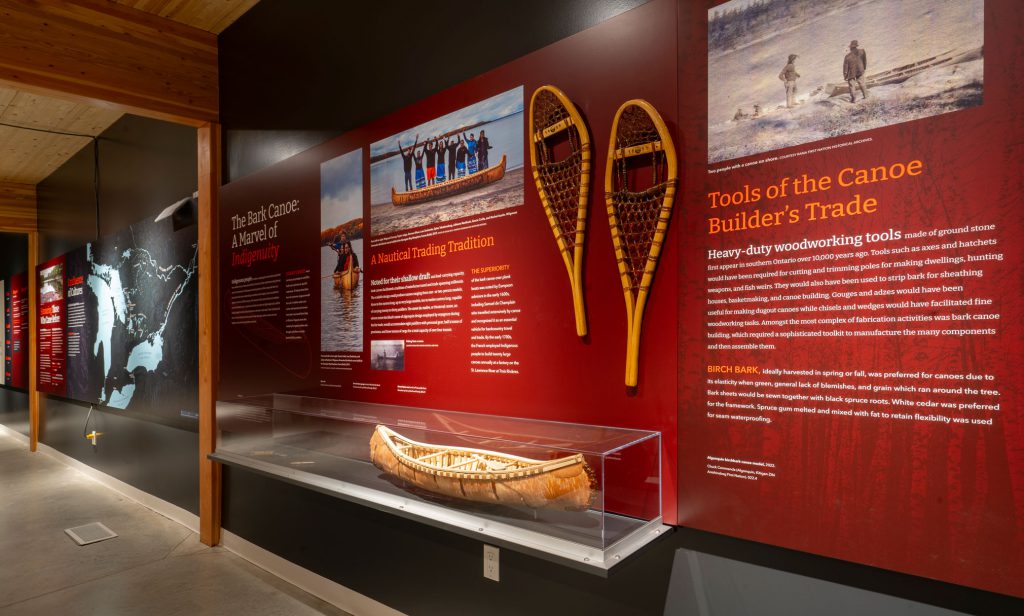
Are You Ready to Experience Misko-Aki in Person?
Visit the Muskoka Discovery Centre to explore Misko-Aki as well as our many other immersive exhibits, programs and activites.
Purchase Tickets
